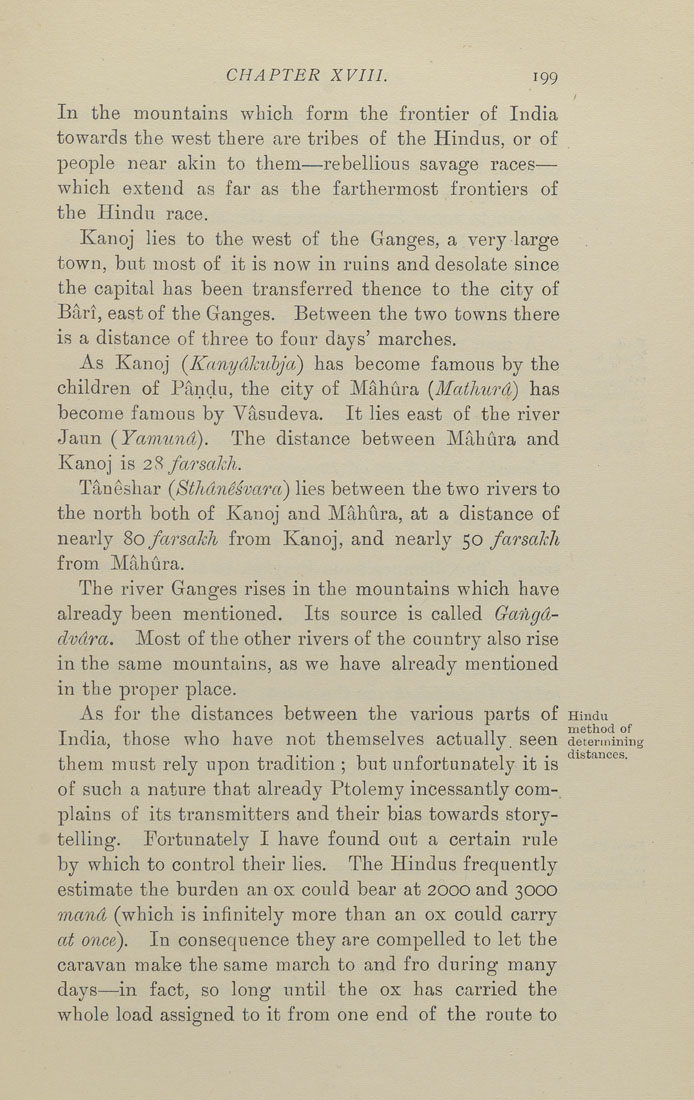Bīrūnī, Muḥammad ibn Aḥmad, Alberuni's India (v. 1)
(London : Kegan Paul, Trench, Trübner & Co., 1910.)
|
||
|
|
|
|
| Page 199 |

CHAPTER XVIII. 199 In the mountains which form the frontier of India towards the west there are tribes of the Hindus, or of people near akin to them—rebellious savage races— which extend as far as the farthermost frontiers of the Hindu race. Kanoj lies to the west of the Ganges, a very large town, but most of it is now in ruins and desolate since the capital has been transferred thence to the city of Bari, east of the Ganges. Between the two towns there is a distance of three to four days' marches. As Kanoj (Kanydkuhja) has become famous by the children of Pandu, the city of Mahura (Matliurd) has become famous by Vasudeva. It lies east of the river Jaun (Yamitnd). The distance between Mahura and Kanoj is 2?< farsakli. Taneshar (SthdnSsvara) lies between the two rivers to the north both of Kanoj and Mahura, at a distance of nearly ^o farsakh from Kanoj, and nearly ^o farsakh from Mahura. The river Ganges rises in the mountains which have already been mentioned. Its source is called Gangd- dvctra. Most of the other rivers of the country also rise in the same mountains, as we have already mentioned in the proper place. As for the distances between the various parts of Hindu India, those who have not themselves actually, seen deterinining them must rely upon tradition ; but unfortunately it is of such a nature that already Ptolemy incessantly com-, plains of its transmitters and their bias towards story¬ telling. Fortunately I have found out a certain rule by which to control their lies. The Hindus frequently estimate the burden an ox could bear at 2000 and 3000 mand (which is infinitely more than an ox could carry at once). In consequence they are compelled to let the caravan make the same march to and fro during many days—in fact, so long until the ox has carried the whole load assigned to it from one end of the route to |
| Page 199 |







